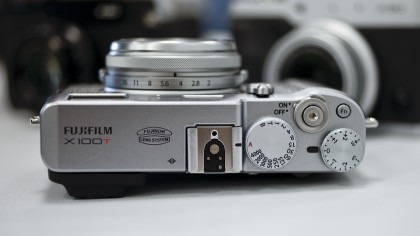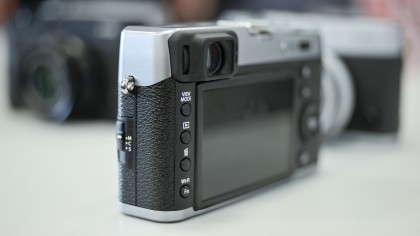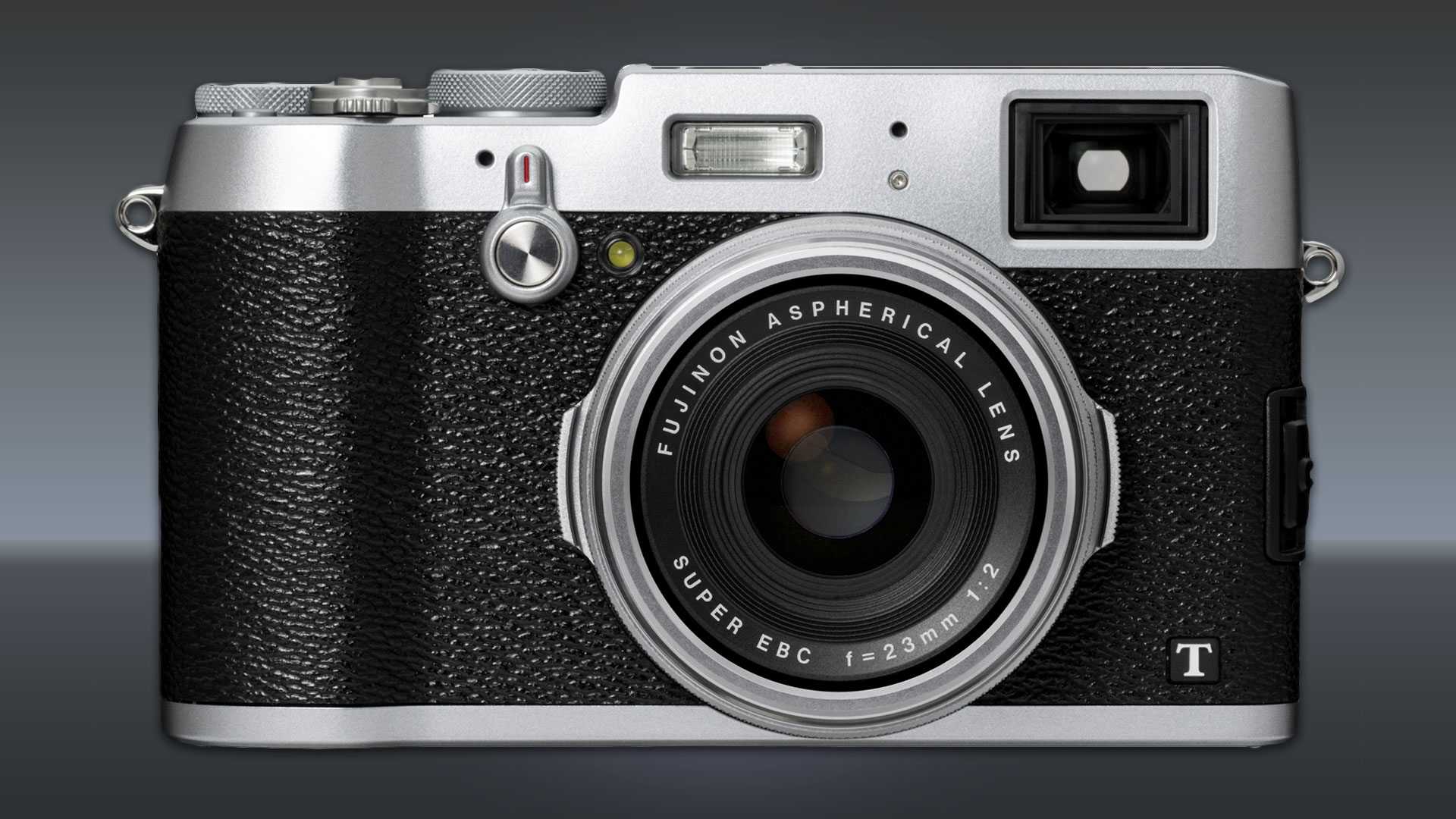Why you can trust TechRadar
Not a huge amount has changed from the X100S to the X100T in terms of the overall look of the camera – but, as they say, if something isn't broke, there's no need to fix it. What has changed, though, is the ability to customise a good proportion of the buttons on the back, depending on your preferred way of working.
On the back of the camera is a four way navigational pad, but instead of each button being marked with a function, you can set your own choices. There are three further buttons, a function button on top of the camera, and two buttons on the left hand side of the screen which can also be customised to one of 28 different settings.
In order to reach the most commonly changed settings all in one place, you can press the Q button to see a sort of quick menu which will show you options such as white balance, sensitivity, film simulation mode and so on. Simply navigate to the setting you want to change and then use the small dial on the back of the camera to alter a setting. The extra good news is here that you can customise the quick menu too, moving settings around to match whatever makes most sense to you.

Many people like the Fuji X100 series cameras because of their traditional controls. There is no mode dial, and while there is no true fully automatic mode, you can reach a close approximation by setting both the shutter speed dial on the top of the camera and the aperture ring around the lens to A for automatic. If you want to shoot in aperture priority, set the shutter speed dial to A, and if you want to only control shutter speed, set the aperture ring to A. These classic dials are a great way to quickly enter manual mode that will be appreciated to traditional photographers. A useful new feature is that the aperture ring can now be adjusted in 1/3 stops rather than just whole stops (though only whole stops are marked).
Just next to the shutter speed dial on the top of the camera, is an exposure compensation dial, which is easily reachable by the thumb. Both this dial and the shutter speed dial are reasonably stiff, meaning it's unlikely you'll accidentally knock them out of place.
The camera's hybrid viewfinder is found on the top left hand corner of the rear of the camera. There's an eye-sensor for detecting when the camera has been lifted to your eye to switch off the LCD screen and activate the viewfinder. You can switch this sensor off though if you only want to use one or the other for any length of time. In order to switch between the electronic and optical viewfinder, there's a small switch on the front of the camera which is easily reached by your fore or middle finger when holding the camera up to the eye. It's worth remembering that the optical viewfinder won't switch on if you've got macro focusing mode switched on.

One of the new features of the X100T is its electronic shutter, which allows you to photograph at 1/32000 of a second, but this is not represented on the shutter speed dial. To activate the electronic shutter, you need to scroll to this option in the main menu. If you want to shoot at a quicker speed than the maximum speed represented on the dial, set it to 1/4000 and then use the small scrolling dial on the back of the camera to move to faster speeds.
Another benefit of using the electronic shutter is that it puts the camera into silent mode. Though while it's true that the shutter doesn't make any noise, it's still possible to hear the lens focusing – so if you're photographing somewhere extremely quiet or silent, you might not be completely inconspicuous.
Probably the camera's biggest changes have been made to the viewfinder, with Fuji making it even better to use than before. When the optical viewfinder is used and the camera is in manual focus mode a rectangle appears in the bottom right of the screen showing an enlarged view of the target area. When the focus assist option is set to Digital Split Image this shows a twin view of the subject which merge into one as lens is focused. In darker conditions, it can be a little difficult to see this view, but in brighter conditions it's much easier.
An alternative option is to use Focus Peaking. You can set the display to show different colours, depending on your preference, where the areas of highest contrast are (which are usually the areas of best focus). Red id a good choice and easily visible against most subjects. As the focusing ring is rotated, and the subject starts to come into focus, red areas start to appear around parts of the image in the 'electronic section' of the optical viewfinder. It makes manual focusing quick and easy.
Another change to the optical viewfinder is that the bright lines which show the framing of the image in the optical viewfinder actually shift as the focus distance changes. This is to correct parallax error and it's especially useful for accurate composition with close subjects.
The information in the X100T's viewfinder is also cleaner looking and it rotates to be easier to read when the camera is turned to shoot in portrait mode.
Using the inbuilt Wi-Fi is easy. As there's no NFC, even if you have a compatible device you'll need to connect via Wi-Fi, making it slightly slower than some other cameras on the market. On the plus side, the free app (available for both iOS and Android), gives you lots of control over camera parameters, including aperture, shutter speed, ISO (sensitivity), white balance, focus point and film simulation mode, making it very useful.
Amy has been writing about cameras, photography and associated tech since 2009. Amy was once part of the photography testing team for Future Publishing working across TechRadar, Digital Camera, PhotoPlus, N Photo and Photography Week. For her photography, she has won awards and has been exhibited. She often partakes in unusual projects - including one intense year where she used a different camera every single day. Amy is currently the Features Editor at Amateur Photographer magazine, and in her increasingly little spare time works across a number of high-profile publications including Wired, Stuff, Digital Camera World, Expert Reviews, and just a little off-tangent, PetsRadar.

